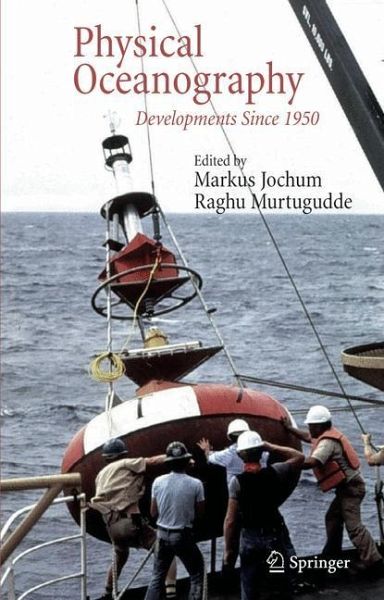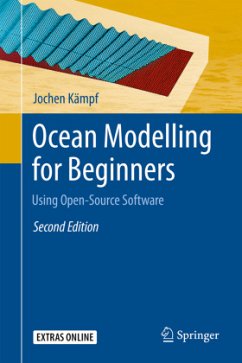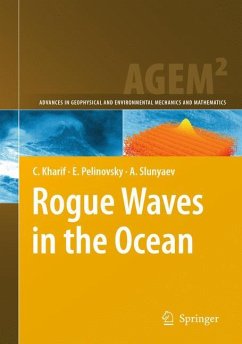
Physical Oceanography
Developments Since 1950
Herausgegeben: Jochum, Markus; Murtugudde, Raghu

PAYBACK Punkte
58 °P sammeln!
This book aims to provide current scientists as well as future generations with a historical overview of the developments in physical oceanography over the last four decades. Senior scientists that have played major roles during that time contributed chapters on oceanographic observations, theory of physical oceanography and modelling.
The book illustrates how research is conducted in physical oceanography, which methods are being used, and how ideas are being communicated between the different branches in physical oceanography.
The book illustrates how research is conducted in physical oceanography, which methods are being used, and how ideas are being communicated between the different branches in physical oceanography.
Over the last ?ve decades Physical Oceanography developed explosively from a state with only a few observations and theories to a mature science with global ?eld p- grams,massivecomputerpower,andacomplextheoreticalframework. Thescientists wholedthisdevelopmentarealreadyorwillsoonberetired. Thiscollectionofessays documentssomeofthebreakthroughsandalsotriestocapturethespiritofexploration and excitement that accompanied these developments. Theoriginalmotivationforthepresentbookcamefromourdesiretounderstand the current social and scienti?c framework in which we work as physical ocean- raphers. Brief re?ection makes it obvious that this framework must have historical roots. However, discussions about these roots with senior scientists only made the picture more complex and confusing. We came to the conclusion that there is no simple story that explains the current state of affairs. The natural solution was to let seniorscientiststellhowtheyperceivedthedevelopmentsinthe?eld,eachfromtheir own unique point of view. Thus, by surrendering editorial objectivity we arrived at a broader, more objective view. The approach is comparable to data acquisition: it is known that there are no perfect observations, so one makes many. The goal then is to reduce biases by sampling as often as possible. However, to keep the book at a manageable size and still give the individual authors space enough to cover several decades, we were limited to 10 to 20 authors whose contributions should not exceed 20 pages. Thus, the book is by no means a complete history of physical oceanography; many important scientists and subdisciplines of the ?eld are not accounted for.














